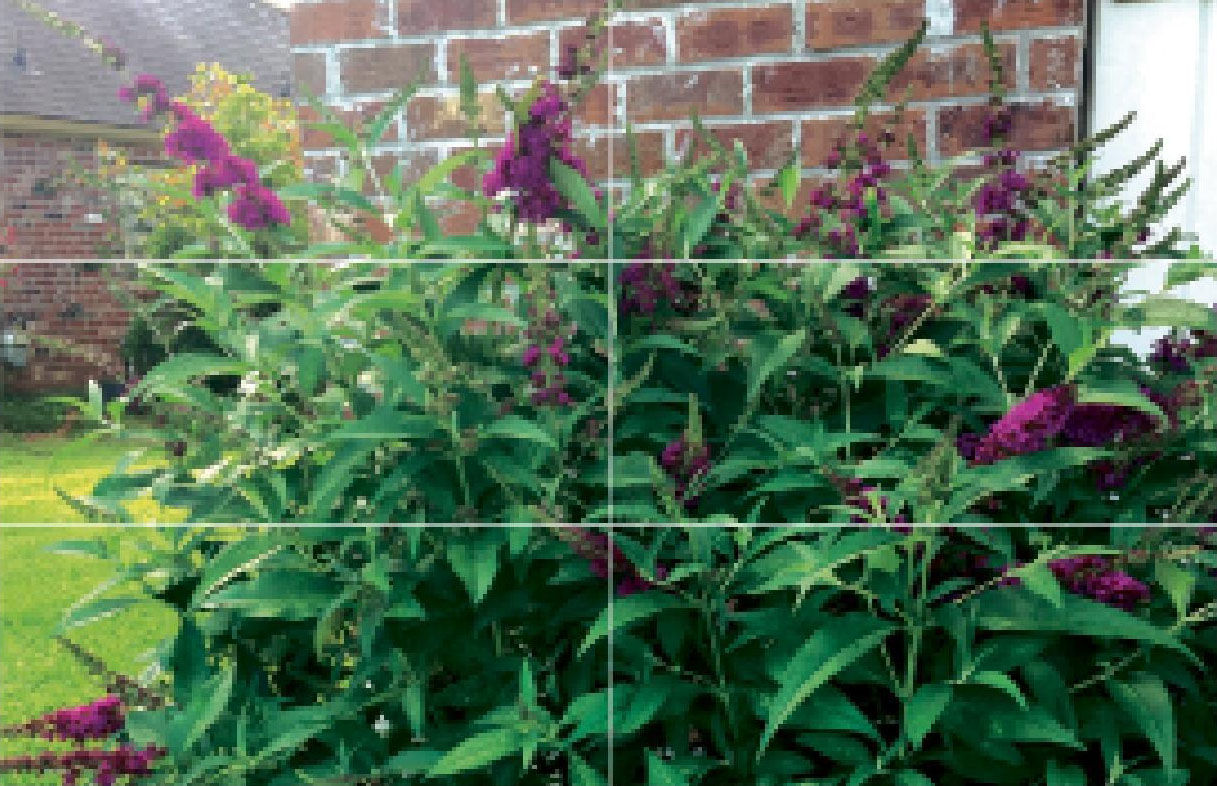
Ernest Crochet
May 16, 2019
Missing body found; investigation continues into case
May 16, 2019Pollinator gardens are all the buzz right now, literally. There’s nothing my family and I love more than sitting out on the back porch or looking out from our kitchen windows over dinner conversation and watching all of the activity in our backyard. We just love watching the hummingbirds fly in to sip nectar from the feeders strategically placed just outside the window and when catching our glance flying off like jet planes. When they slow down just slow enough to take a sip, they are a joy to watch.
To enhance the beauty of our view, we added a pollinator garden. This spring our young girls especially loved observing the monarch butterfly caterpillars on the milkweed. In addition to butterflies and hummingbirds, many other pollinators include honeybees, bumblebees, moths, flies, beetles and even bats.
Anyone who has a little room to spare in the landscape or even a place to put out containers can provide a wonderful place for these delightful creatures that are so essential to our environment.
According to the Xerces Society for Invertebrate Conservation, more than 85% of the world’s flowering plants require pollinators to reproduce. That includes more than two-thirds of the world’s crop species. In many places, unfortunately, we are at risk of losing more pollinators to habitat loss, pesticide use and introduced diseases. So don’t ask what your garden can do for you, but what you can do with your garden for our world. Get a pollinator garden growing.
It’s no surprise that some of the flowers most often visited by pollinators are those that produce the most pollen and the most nectar. However, the most commonly used ornamental landscape plants that have the showiest flowers actually produce the least amount of pollen and nectar. Native plants typically attract the most pollinators. As it turns out, we have the same great taste as the pollinators, and it is because of them that one in every three bites of food we eat relies on pollination.
Vegetable gardens, herb gardens, citrus, blackberry, guava, persimmons, strawberries, blueberries, loquats, peaches, apples and pears require pollinators. You can help by planting some of these in your home landscape. In addition, many bedding plants are attractive to pollinators. Most great vegetable and fruit gardeners know to plant something nearby to attract pollinators.
The flowers of plants that require pollinators have evolved to attract particular pollinators. Flowers are shaped to ensure pollination from a specific pollinator while excluding others. Hummingbirds use their long tongues to access nectar while butterflies and moths using their specialized mouth parts called proboscis to reach deep into long, tubular flowers. Open-faced flowers and those with short flower tubes make nectar more accessible to the lapping and chewing mouth parts of bees.
Luckily, many perennials are great selections for these types of gardens. And they are my favorites because they come back year after year and do not require much care. So many plants are there to choose from, and nothing really needs to be coordinated. Pollinator gardens often reflect the look of flowers growing in the wild. All you need is a fairly sunny place for your bed, preferably one that is easily visible for your viewing enjoyment.
Plants that attract bees and butterflies include alyssum, aster, bee balm, butterfly bush, cupheas (Mexican heather, bat face cuphea, firecracker bush), daylily, delphinium, dianthus, fennel, hollyhock, lantana, lavender, marigold, nasturtium, phlox, poppy, sages, Shasta daisy, sedum, sunflower, verbena, yarrow and zinnia.
Certain plants attract very specific butterfly caterpillars and are known as “host plants.” These host plants are the nurseries of the pollinator garden, where the eggs and immature insects grow before metamorphosis into butterflies and moths. Some examples are bean leaves (long-tailed skipper), cassias (sulfur butterflies), dill, fennel and parsley (Eastern black swallowtails), hollyhocks (painted lady), lupine (silvery blue), milkweed (monarch), passion vines (Gulf fritillary) and verbena (common buckeye).
Some plants that attract hummingbirds are angel’s trumpet, bee balm, bat face cuphea, bleeding heart, butterfly weed, columbine, coral bells, cleome, dahlia, four o’clocks, firecracker plant, foxglove, geranium, glossy abelia, hollyhocks, iris, lantana, lily, lupine, paintbrush, phlox, sage, salvia and yucca.
Lastly, bats are not only great pollinators, they are also great mosquito hunters. A word on bats as pollinators: I know most people get goosebumps when bats are mentioned because of their undeserved reputation for being disease-carrying, blood-sucking pests. But most folks may not realize that a single bat can eat more than 600 mosquitoes. Talk about organic pest control.
Bats, like bees and other pollinators, are declining, too. They need healthy habitats not only to help in our pollinating but to also keep our mosquito populations under control. You can install a bat house to provide habitat for bats. They are easily constructed and can be purchased at most hardware stores.
Night-blooming plants that will attract bats are cleome, datura, evening primrose, four o’clocks, moonflower, night-blooming jessamine and water lily, nicotiana and yucca.
You can do so much to contribute to this great cause by planting beautiful flowers that add aesthetic value to your home while providing an environment that supports these vital garden companions. It is a worthy cause that can provide fulfillment and happiness for all to enjoy.








